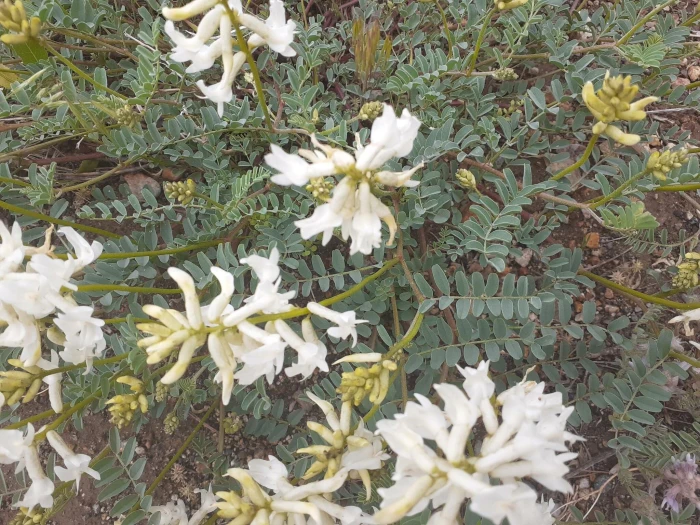Curvepod Milkvetch
(Astragalus curvicarpus)
Curvepod Milkvetch (Astragalus curvicarpus)
/
/

© Jim Dreier
CC BY 4.0
Image By:
© Jim Dreier
Recorded By:
Copyright:
CC BY 4.0
Copyright Notice:
Photo by: © Jim Dreier | License Type: CC BY 4.0 | License URL: http://creativecommons.org/licenses/by/4.0/ | Uploader: papili01 | Publisher: iNaturalist |

























Estimated Native Range
Climate Requirements for Vernon Hills, Illinois
| This Plant | Your Site | Plant Suitability for Your Location | ||
|---|---|---|---|---|
| • Precipitation | 8" - 29" | 35" | Your precipitation may be too high for this plant. | Too high |
| • High Temp. | 68°F - 94°F | 83°F | Your summer temperatures are normal for this plant. | Excellent |
| • Low Temp. | 5°F - 30°F | 13°F | Your winter temperatures are normal for this plant | Excellent |
This plant may not grow well at your location - your precipitation is too high.
Summary
Astragalus curvicarpus, commonly known as curvepod milkvetch, is a perennial herb native to the arid regions of the western United States, particularly found in grasslands, sagebrush communities, and desert scrub. It is well-adapted to these ecosystems, where it often grows in sandy or gravelly soils. This species typically exhibits a low-growing habit with stems that may reach up to 2 feet in length, often sprawling or ascending. The small, bright yellow flowers bloom in the spring and are arranged in dense, spherical clusters. The distinctive curved seed pods that follow are a notable characteristic of the plant.
Curvepod milkvetch is valued for its drought tolerance and ability to thrive in poor soil conditions, making it suitable for xeriscaping and restoration projects in arid environments. It requires minimal maintenance once established and can be used to stabilize soils and prevent erosion. In cultivation, it prefers full sun exposure and well-drained soils, and it is relatively free from major pests and diseases. However, it is not commonly found in traditional garden settings due to its specialized habitat requirements.CC BY-SA 4.0
Curvepod milkvetch is valued for its drought tolerance and ability to thrive in poor soil conditions, making it suitable for xeriscaping and restoration projects in arid environments. It requires minimal maintenance once established and can be used to stabilize soils and prevent erosion. In cultivation, it prefers full sun exposure and well-drained soils, and it is relatively free from major pests and diseases. However, it is not commonly found in traditional garden settings due to its specialized habitat requirements.CC BY-SA 4.0
Plant Description
- Plant Type: Herb
- Height: 0.8-1.5 feet
- Width: 1-2 feet
- Growth Rate: Rapid
- Flower Color: White, Yellow
- Flowering Season: Spring, Summer
- Leaf Retention: Deciduous
Growth Requirements
- Sun: Full Sun, Part Shade
- Water: Low
- Drainage: Fast, Medium
Common Uses
Bee Garden, Drought Tolerant, Low Maintenance
Natural Habitat
Native to grasslands, sagebrush communities, and desert scrub
Other Names
Common Names: Curvepod Locoweed
Scientific Names: Astragalus curvicarpus, Astragalus gibbsiae var. curvicarpus, Astragalus speirocarpus var. curvicarpus, Homalobus curvicarpus
GBIF Accepted Name: Astragalus curvicarpus